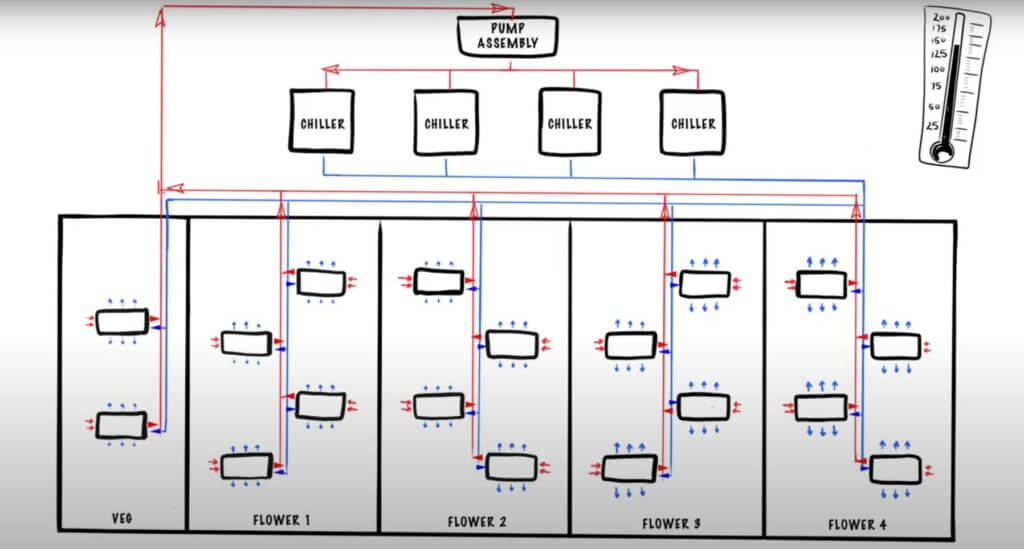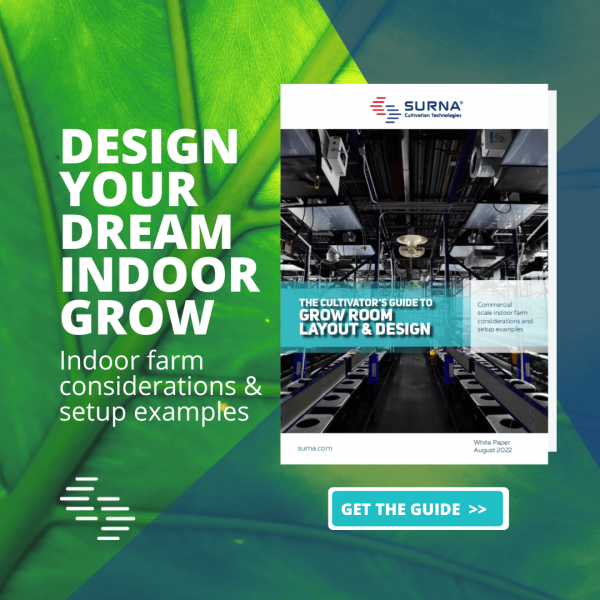While most people have heard of air conditioning, not everyone has heard of chilled water systems. This makes it sound scary and new. But in reality, water-chilled cooling and heating have been around since the 70s and can regularly be found in hotels, hospitals and universities, as well as high-heat environments like server farms and indoor agriculture.
While typically only found in commercial environments in the US, worldwide, water chilled technology is increasingly being used in residential buildings as well. Additionally, in some areas, chiller systems are actually mandated and required by local building codes for buildings over a certain square footage due to their superior energy efficiency.
If all that hasn’t convinced you yet that water-chilled climate control is a real and valuable way to cool your garden, maybe a short explanation of how the system works will ease your mind.
How Water-Chillers Work
Water-chilled climate control uses water, instead of air, to cool a space. A reservoir holds a water and glycol mixture that is circulated throughout the building through pipes. Inside each room, there are air handlers, which work in the same way as traditional air conditioning. The cold water is run over cooling coils inside the air handler and a fan blows the air from the room over the coils.
How Does the Water Get Cooled?
Warm water returns from the air handlers back to the initial reservoir of water. Once the overall temperature of the water in the reservoir goes above a certain point, the chillers, located outside the building, turn on. The reservoir water is then run through the chiller, where it is cooled down to the appropriate temperature.
A bonus of using water-chilled systems is that the chiller only turns on when the water in the reservoir gets above a certain temperature, chillers are not directly connected to air handlers. This means that as long as that water is within a certain range, the chiller is not running but the air handlers are still able to cool the rooms.
This provides significant energy savings. Additionally, because water has 20 times the heat absorption rate of air, it takes much longer for the water mixture to reach a temperature that causes the chiller to turn on that it does for air.
Think of it this way, if you are standing outside on a cold day, say 35 degrees out, you will be cold and uncomfortable, but not deathly so, However, if you were to jump into a pool of 35 degree water, you could start to experience hypothermia in as little as 30 minutes.
As a bonus, if a chiller needs to be repaired, it is possible to take one chiller out of circulation and still maintain the temperature of your water reservoir, and thus the temperature inside your rooms. This is not possible with traditional air conditioning where each air handler is tied to an individual condenser.
It is also important to note that in water-chilled cooling systems, there is no evaporation of water. The system is closed-loop, running water through pipes and back to the reservoir, so no water will be added to your environment. As a bonus, any water that is collected from the condenser can be collected and used to water the plants in your garden, providing water savings as well as energy savings.
Overall, water-chilled cooling systems are a great way to control the climate of any building. If you still aren’t sure if water-cooled climate control is for you, please contact us to get answers to any questions you may have.


